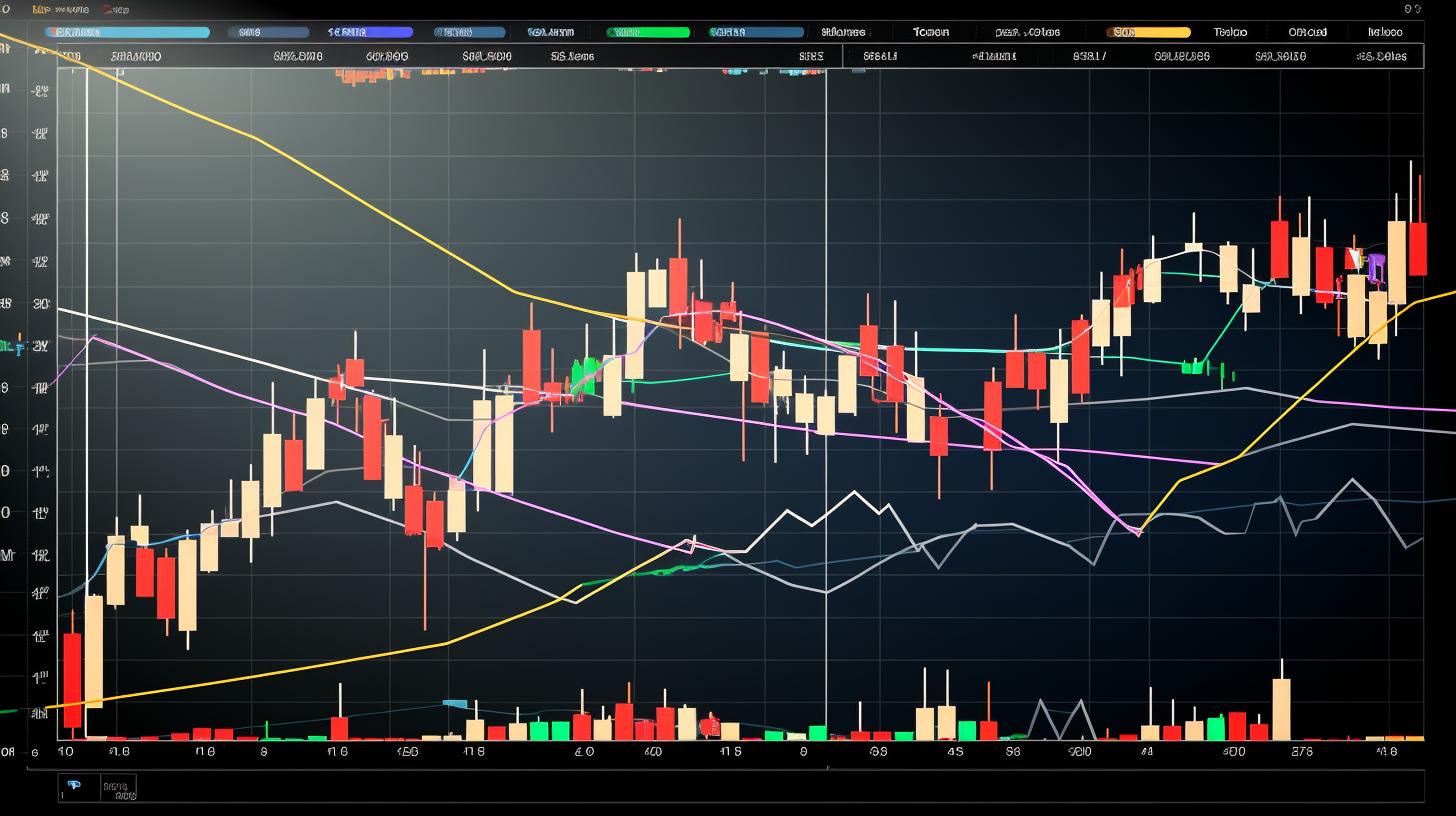The decline in job quitting and the rise of “job hugging” reflect heightened economic uncertainty and risk aversion among American workers. This dynamic dampens labor market fluidity, restrains wage growth, and contributes to productivity losses through increased employee disengagement. !-- wp:paragraph -->
Contents
FinOracleAI — Market ViewFinOracleAI — Market ViewFinOracleAI — Market ViewBroader Economic Implications of Reduced Labor MobilityFinOracleAI — Market ViewBroader Economic Implications of Reduced Labor MobilityFinOracleAI — Market ViewBroader Economic Implications of Reduced Labor MobilityFinOracleAI — Market ViewDisengagement Hidden Behind Low TurnoverBroader Economic Implications of Reduced Labor MobilityFinOracleAI — Market ViewDisengagement Hidden Behind Low TurnoverBroader Economic Implications of Reduced Labor MobilityFinOracleAI — Market ViewThe Rise of “Job Hugging”: Stability Over RiskDisengagement Hidden Behind Low TurnoverBroader Economic Implications of Reduced Labor MobilityFinOracleAI — Market ViewThe Rise of “Job Hugging”: Stability Over RiskDisengagement Hidden Behind Low TurnoverBroader Economic Implications of Reduced Labor MobilityFinOracleAI — Market ViewU.S. Labor Market Trends Reflect Worker CautionThe Rise of “Job Hugging”: Stability Over RiskDisengagement Hidden Behind Low TurnoverBroader Economic Implications of Reduced Labor MobilityFinOracleAI — Market View
- Opportunities: Companies that invest in upskilling and employee engagement may gain a competitive advantage by unlocking latent workforce potential.
- Risks: Prolonged labor market stagnation could slow economic growth, reduce consumer spending power, and increase organizational inefficiencies.
- Sector Impact: Industries reliant on innovation and talent mobility may face talent shortages and reduced dynamism.
- Demographic Insights: Younger, tech-savvy workers may find growth opportunities if workforce strategies evolve accordingly.
FinOracleAI — Market View
The decline in job quitting and the rise of “job hugging” reflect heightened economic uncertainty and risk aversion among American workers. This dynamic dampens labor market fluidity, restrains wage growth, and contributes to productivity losses through increased employee disengagement. !-- wp:paragraph -->- Opportunities: Companies that invest in upskilling and employee engagement may gain a competitive advantage by unlocking latent workforce potential.
- Risks: Prolonged labor market stagnation could slow economic growth, reduce consumer spending power, and increase organizational inefficiencies.
- Sector Impact: Industries reliant on innovation and talent mobility may face talent shortages and reduced dynamism.
- Demographic Insights: Younger, tech-savvy workers may find growth opportunities if workforce strategies evolve accordingly.
FinOracleAI — Market View
The decline in job quitting and the rise of “job hugging” reflect heightened economic uncertainty and risk aversion among American workers. This dynamic dampens labor market fluidity, restrains wage growth, and contributes to productivity losses through increased employee disengagement. !-- wp:paragraph -->- Opportunities: Companies that invest in upskilling and employee engagement may gain a competitive advantage by unlocking latent workforce potential.
- Risks: Prolonged labor market stagnation could slow economic growth, reduce consumer spending power, and increase organizational inefficiencies.
- Sector Impact: Industries reliant on innovation and talent mobility may face talent shortages and reduced dynamism.
- Demographic Insights: Younger, tech-savvy workers may find growth opportunities if workforce strategies evolve accordingly.
FinOracleAI — Market View
The decline in job quitting and the rise of “job hugging” reflect heightened economic uncertainty and risk aversion among American workers. This dynamic dampens labor market fluidity, restrains wage growth, and contributes to productivity losses through increased employee disengagement. !-- wp:paragraph -->- Opportunities: Companies that invest in upskilling and employee engagement may gain a competitive advantage by unlocking latent workforce potential.
- Risks: Prolonged labor market stagnation could slow economic growth, reduce consumer spending power, and increase organizational inefficiencies.
- Sector Impact: Industries reliant on innovation and talent mobility may face talent shortages and reduced dynamism.
- Demographic Insights: Younger, tech-savvy workers may find growth opportunities if workforce strategies evolve accordingly.
“Even if people are engaged and putting forth extra effort, they might have to go above and beyond to compensate for disengaged teammates,” said SHRM’s Atkinson. “This creates a knock-on effect that impacts overall organizational productivity.”Broader Economic Implications of Reduced Labor Mobility
The reluctance of workers to switch jobs may suppress wage growth and encourage companies to adopt more cautious hiring practices. In some sectors, natural attrition and hiring freezes have replaced layoffs, creating an appearance of labor market stability that lacks underlying momentum. !-- wp:paragraph --> Matt Bohn highlighted that younger workers, particularly Gen Z, could be positioned to thrive due to their adaptability and technological skills, especially if companies invest in upskilling and innovative workforce strategies. !-- wp:paragraph --> However, experts caution that without renewed worker confidence and increased mobility, the U.S. economy may face prolonged stagnation in the near term. !-- wp:paragraph -->FinOracleAI — Market View
The decline in job quitting and the rise of “job hugging” reflect heightened economic uncertainty and risk aversion among American workers. This dynamic dampens labor market fluidity, restrains wage growth, and contributes to productivity losses through increased employee disengagement. !-- wp:paragraph -->- Opportunities: Companies that invest in upskilling and employee engagement may gain a competitive advantage by unlocking latent workforce potential.
- Risks: Prolonged labor market stagnation could slow economic growth, reduce consumer spending power, and increase organizational inefficiencies.
- Sector Impact: Industries reliant on innovation and talent mobility may face talent shortages and reduced dynamism.
- Demographic Insights: Younger, tech-savvy workers may find growth opportunities if workforce strategies evolve accordingly.
“Even if people are engaged and putting forth extra effort, they might have to go above and beyond to compensate for disengaged teammates,” said SHRM’s Atkinson. “This creates a knock-on effect that impacts overall organizational productivity.”Broader Economic Implications of Reduced Labor Mobility
The reluctance of workers to switch jobs may suppress wage growth and encourage companies to adopt more cautious hiring practices. In some sectors, natural attrition and hiring freezes have replaced layoffs, creating an appearance of labor market stability that lacks underlying momentum. !-- wp:paragraph --> Matt Bohn highlighted that younger workers, particularly Gen Z, could be positioned to thrive due to their adaptability and technological skills, especially if companies invest in upskilling and innovative workforce strategies. !-- wp:paragraph --> However, experts caution that without renewed worker confidence and increased mobility, the U.S. economy may face prolonged stagnation in the near term. !-- wp:paragraph -->FinOracleAI — Market View
The decline in job quitting and the rise of “job hugging” reflect heightened economic uncertainty and risk aversion among American workers. This dynamic dampens labor market fluidity, restrains wage growth, and contributes to productivity losses through increased employee disengagement. !-- wp:paragraph -->- Opportunities: Companies that invest in upskilling and employee engagement may gain a competitive advantage by unlocking latent workforce potential.
- Risks: Prolonged labor market stagnation could slow economic growth, reduce consumer spending power, and increase organizational inefficiencies.
- Sector Impact: Industries reliant on innovation and talent mobility may face talent shortages and reduced dynamism.
- Demographic Insights: Younger, tech-savvy workers may find growth opportunities if workforce strategies evolve accordingly.
“Even if people are engaged and putting forth extra effort, they might have to go above and beyond to compensate for disengaged teammates,” said SHRM’s Atkinson. “This creates a knock-on effect that impacts overall organizational productivity.”Broader Economic Implications of Reduced Labor Mobility
The reluctance of workers to switch jobs may suppress wage growth and encourage companies to adopt more cautious hiring practices. In some sectors, natural attrition and hiring freezes have replaced layoffs, creating an appearance of labor market stability that lacks underlying momentum. !-- wp:paragraph --> Matt Bohn highlighted that younger workers, particularly Gen Z, could be positioned to thrive due to their adaptability and technological skills, especially if companies invest in upskilling and innovative workforce strategies. !-- wp:paragraph --> However, experts caution that without renewed worker confidence and increased mobility, the U.S. economy may face prolonged stagnation in the near term. !-- wp:paragraph -->FinOracleAI — Market View
The decline in job quitting and the rise of “job hugging” reflect heightened economic uncertainty and risk aversion among American workers. This dynamic dampens labor market fluidity, restrains wage growth, and contributes to productivity losses through increased employee disengagement. !-- wp:paragraph -->- Opportunities: Companies that invest in upskilling and employee engagement may gain a competitive advantage by unlocking latent workforce potential.
- Risks: Prolonged labor market stagnation could slow economic growth, reduce consumer spending power, and increase organizational inefficiencies.
- Sector Impact: Industries reliant on innovation and talent mobility may face talent shortages and reduced dynamism.
- Demographic Insights: Younger, tech-savvy workers may find growth opportunities if workforce strategies evolve accordingly.
Disengagement Hidden Behind Low Turnover
While low turnover might appear positive for employers, experts warn that it may mask rising employee disengagement. A February study in the American Journal of Preventive Medicine estimated that disengaged employees cost a typical 1,000-person company about $5 million annually in lost productivity. !-- wp:paragraph --> The study found that an average disengaged worker could cost a company $4,000 each year, while an executive’s disengagement could lead to losses of up to $20,000 annually. !-- wp:paragraph --> Furthermore, a LinkedIn survey revealed that 58% of U.S. professionals feel their current roles underutilize their skills, contributing to disengagement risks. !-- wp:paragraph -->“Even if people are engaged and putting forth extra effort, they might have to go above and beyond to compensate for disengaged teammates,” said SHRM’s Atkinson. “This creates a knock-on effect that impacts overall organizational productivity.”Broader Economic Implications of Reduced Labor Mobility
The reluctance of workers to switch jobs may suppress wage growth and encourage companies to adopt more cautious hiring practices. In some sectors, natural attrition and hiring freezes have replaced layoffs, creating an appearance of labor market stability that lacks underlying momentum. !-- wp:paragraph --> Matt Bohn highlighted that younger workers, particularly Gen Z, could be positioned to thrive due to their adaptability and technological skills, especially if companies invest in upskilling and innovative workforce strategies. !-- wp:paragraph --> However, experts caution that without renewed worker confidence and increased mobility, the U.S. economy may face prolonged stagnation in the near term. !-- wp:paragraph -->FinOracleAI — Market View
The decline in job quitting and the rise of “job hugging” reflect heightened economic uncertainty and risk aversion among American workers. This dynamic dampens labor market fluidity, restrains wage growth, and contributes to productivity losses through increased employee disengagement. !-- wp:paragraph -->- Opportunities: Companies that invest in upskilling and employee engagement may gain a competitive advantage by unlocking latent workforce potential.
- Risks: Prolonged labor market stagnation could slow economic growth, reduce consumer spending power, and increase organizational inefficiencies.
- Sector Impact: Industries reliant on innovation and talent mobility may face talent shortages and reduced dynamism.
- Demographic Insights: Younger, tech-savvy workers may find growth opportunities if workforce strategies evolve accordingly.
Disengagement Hidden Behind Low Turnover
While low turnover might appear positive for employers, experts warn that it may mask rising employee disengagement. A February study in the American Journal of Preventive Medicine estimated that disengaged employees cost a typical 1,000-person company about $5 million annually in lost productivity. !-- wp:paragraph --> The study found that an average disengaged worker could cost a company $4,000 each year, while an executive’s disengagement could lead to losses of up to $20,000 annually. !-- wp:paragraph --> Furthermore, a LinkedIn survey revealed that 58% of U.S. professionals feel their current roles underutilize their skills, contributing to disengagement risks. !-- wp:paragraph -->“Even if people are engaged and putting forth extra effort, they might have to go above and beyond to compensate for disengaged teammates,” said SHRM’s Atkinson. “This creates a knock-on effect that impacts overall organizational productivity.”Broader Economic Implications of Reduced Labor Mobility
The reluctance of workers to switch jobs may suppress wage growth and encourage companies to adopt more cautious hiring practices. In some sectors, natural attrition and hiring freezes have replaced layoffs, creating an appearance of labor market stability that lacks underlying momentum. !-- wp:paragraph --> Matt Bohn highlighted that younger workers, particularly Gen Z, could be positioned to thrive due to their adaptability and technological skills, especially if companies invest in upskilling and innovative workforce strategies. !-- wp:paragraph --> However, experts caution that without renewed worker confidence and increased mobility, the U.S. economy may face prolonged stagnation in the near term. !-- wp:paragraph -->FinOracleAI — Market View
The decline in job quitting and the rise of “job hugging” reflect heightened economic uncertainty and risk aversion among American workers. This dynamic dampens labor market fluidity, restrains wage growth, and contributes to productivity losses through increased employee disengagement. !-- wp:paragraph -->- Opportunities: Companies that invest in upskilling and employee engagement may gain a competitive advantage by unlocking latent workforce potential.
- Risks: Prolonged labor market stagnation could slow economic growth, reduce consumer spending power, and increase organizational inefficiencies.
- Sector Impact: Industries reliant on innovation and talent mobility may face talent shortages and reduced dynamism.
- Demographic Insights: Younger, tech-savvy workers may find growth opportunities if workforce strategies evolve accordingly.
The Rise of “Job Hugging”: Stability Over Risk
Consulting firm Korn Ferry has termed this phenomenon “job hugging,” highlighting workers’ preference for stability amid uncertainty. Fear of the unknown is driving employees to stay put, even at personal or professional costs. !-- wp:paragraph --> Matt Bohn, senior client partner at Korn Ferry, noted, “A few years ago, during the great resignation, people were quitting in large numbers for bigger pay bumps. I think wage growth has cooled, job-switching premiums have shrunk, and a lot of workers worry that their pay won’t keep up with rising costs. So I think they’re clinging to stability in a time of uncertainty.” !-- wp:paragraph -->Disengagement Hidden Behind Low Turnover
While low turnover might appear positive for employers, experts warn that it may mask rising employee disengagement. A February study in the American Journal of Preventive Medicine estimated that disengaged employees cost a typical 1,000-person company about $5 million annually in lost productivity. !-- wp:paragraph --> The study found that an average disengaged worker could cost a company $4,000 each year, while an executive’s disengagement could lead to losses of up to $20,000 annually. !-- wp:paragraph --> Furthermore, a LinkedIn survey revealed that 58% of U.S. professionals feel their current roles underutilize their skills, contributing to disengagement risks. !-- wp:paragraph -->“Even if people are engaged and putting forth extra effort, they might have to go above and beyond to compensate for disengaged teammates,” said SHRM’s Atkinson. “This creates a knock-on effect that impacts overall organizational productivity.”Broader Economic Implications of Reduced Labor Mobility
The reluctance of workers to switch jobs may suppress wage growth and encourage companies to adopt more cautious hiring practices. In some sectors, natural attrition and hiring freezes have replaced layoffs, creating an appearance of labor market stability that lacks underlying momentum. !-- wp:paragraph --> Matt Bohn highlighted that younger workers, particularly Gen Z, could be positioned to thrive due to their adaptability and technological skills, especially if companies invest in upskilling and innovative workforce strategies. !-- wp:paragraph --> However, experts caution that without renewed worker confidence and increased mobility, the U.S. economy may face prolonged stagnation in the near term. !-- wp:paragraph -->FinOracleAI — Market View
The decline in job quitting and the rise of “job hugging” reflect heightened economic uncertainty and risk aversion among American workers. This dynamic dampens labor market fluidity, restrains wage growth, and contributes to productivity losses through increased employee disengagement. !-- wp:paragraph -->- Opportunities: Companies that invest in upskilling and employee engagement may gain a competitive advantage by unlocking latent workforce potential.
- Risks: Prolonged labor market stagnation could slow economic growth, reduce consumer spending power, and increase organizational inefficiencies.
- Sector Impact: Industries reliant on innovation and talent mobility may face talent shortages and reduced dynamism.
- Demographic Insights: Younger, tech-savvy workers may find growth opportunities if workforce strategies evolve accordingly.
The Rise of “Job Hugging”: Stability Over Risk
Consulting firm Korn Ferry has termed this phenomenon “job hugging,” highlighting workers’ preference for stability amid uncertainty. Fear of the unknown is driving employees to stay put, even at personal or professional costs. !-- wp:paragraph --> Matt Bohn, senior client partner at Korn Ferry, noted, “A few years ago, during the great resignation, people were quitting in large numbers for bigger pay bumps. I think wage growth has cooled, job-switching premiums have shrunk, and a lot of workers worry that their pay won’t keep up with rising costs. So I think they’re clinging to stability in a time of uncertainty.” !-- wp:paragraph -->Disengagement Hidden Behind Low Turnover
While low turnover might appear positive for employers, experts warn that it may mask rising employee disengagement. A February study in the American Journal of Preventive Medicine estimated that disengaged employees cost a typical 1,000-person company about $5 million annually in lost productivity. !-- wp:paragraph --> The study found that an average disengaged worker could cost a company $4,000 each year, while an executive’s disengagement could lead to losses of up to $20,000 annually. !-- wp:paragraph --> Furthermore, a LinkedIn survey revealed that 58% of U.S. professionals feel their current roles underutilize their skills, contributing to disengagement risks. !-- wp:paragraph -->“Even if people are engaged and putting forth extra effort, they might have to go above and beyond to compensate for disengaged teammates,” said SHRM’s Atkinson. “This creates a knock-on effect that impacts overall organizational productivity.”Broader Economic Implications of Reduced Labor Mobility
The reluctance of workers to switch jobs may suppress wage growth and encourage companies to adopt more cautious hiring practices. In some sectors, natural attrition and hiring freezes have replaced layoffs, creating an appearance of labor market stability that lacks underlying momentum. !-- wp:paragraph --> Matt Bohn highlighted that younger workers, particularly Gen Z, could be positioned to thrive due to their adaptability and technological skills, especially if companies invest in upskilling and innovative workforce strategies. !-- wp:paragraph --> However, experts caution that without renewed worker confidence and increased mobility, the U.S. economy may face prolonged stagnation in the near term. !-- wp:paragraph -->FinOracleAI — Market View
The decline in job quitting and the rise of “job hugging” reflect heightened economic uncertainty and risk aversion among American workers. This dynamic dampens labor market fluidity, restrains wage growth, and contributes to productivity losses through increased employee disengagement. !-- wp:paragraph -->- Opportunities: Companies that invest in upskilling and employee engagement may gain a competitive advantage by unlocking latent workforce potential.
- Risks: Prolonged labor market stagnation could slow economic growth, reduce consumer spending power, and increase organizational inefficiencies.
- Sector Impact: Industries reliant on innovation and talent mobility may face talent shortages and reduced dynamism.
- Demographic Insights: Younger, tech-savvy workers may find growth opportunities if workforce strategies evolve accordingly.
U.S. Labor Market Trends Reflect Worker Caution
Since April 2024, the U.S. labor market has experienced a notable slowdown, shedding 1.2 million jobs amid the slowest hiring pace in a decade, excluding pandemic-related disruptions. Concurrently, the quits rate—a traditional indicator of worker confidence—has plummeted to approximately 2%, levels not commonly seen since early 2016. !-- wp:paragraph --> James Atkinson, vice president of thought leadership at SHRM, attributes this trend to widespread economic and labor market anxiety. “There’s been a lot of anxiety about the direction of both the economy and the labor market as well,” he explained. “I think that is part of what’s keeping people in jobs.” !-- wp:paragraph -->The Rise of “Job Hugging”: Stability Over Risk
Consulting firm Korn Ferry has termed this phenomenon “job hugging,” highlighting workers’ preference for stability amid uncertainty. Fear of the unknown is driving employees to stay put, even at personal or professional costs. !-- wp:paragraph --> Matt Bohn, senior client partner at Korn Ferry, noted, “A few years ago, during the great resignation, people were quitting in large numbers for bigger pay bumps. I think wage growth has cooled, job-switching premiums have shrunk, and a lot of workers worry that their pay won’t keep up with rising costs. So I think they’re clinging to stability in a time of uncertainty.” !-- wp:paragraph -->Disengagement Hidden Behind Low Turnover
While low turnover might appear positive for employers, experts warn that it may mask rising employee disengagement. A February study in the American Journal of Preventive Medicine estimated that disengaged employees cost a typical 1,000-person company about $5 million annually in lost productivity. !-- wp:paragraph --> The study found that an average disengaged worker could cost a company $4,000 each year, while an executive’s disengagement could lead to losses of up to $20,000 annually. !-- wp:paragraph --> Furthermore, a LinkedIn survey revealed that 58% of U.S. professionals feel their current roles underutilize their skills, contributing to disengagement risks. !-- wp:paragraph -->“Even if people are engaged and putting forth extra effort, they might have to go above and beyond to compensate for disengaged teammates,” said SHRM’s Atkinson. “This creates a knock-on effect that impacts overall organizational productivity.”Broader Economic Implications of Reduced Labor Mobility
The reluctance of workers to switch jobs may suppress wage growth and encourage companies to adopt more cautious hiring practices. In some sectors, natural attrition and hiring freezes have replaced layoffs, creating an appearance of labor market stability that lacks underlying momentum. !-- wp:paragraph --> Matt Bohn highlighted that younger workers, particularly Gen Z, could be positioned to thrive due to their adaptability and technological skills, especially if companies invest in upskilling and innovative workforce strategies. !-- wp:paragraph --> However, experts caution that without renewed worker confidence and increased mobility, the U.S. economy may face prolonged stagnation in the near term. !-- wp:paragraph -->FinOracleAI — Market View
The decline in job quitting and the rise of “job hugging” reflect heightened economic uncertainty and risk aversion among American workers. This dynamic dampens labor market fluidity, restrains wage growth, and contributes to productivity losses through increased employee disengagement. !-- wp:paragraph -->- Opportunities: Companies that invest in upskilling and employee engagement may gain a competitive advantage by unlocking latent workforce potential.
- Risks: Prolonged labor market stagnation could slow economic growth, reduce consumer spending power, and increase organizational inefficiencies.
- Sector Impact: Industries reliant on innovation and talent mobility may face talent shortages and reduced dynamism.
- Demographic Insights: Younger, tech-savvy workers may find growth opportunities if workforce strategies evolve accordingly.













